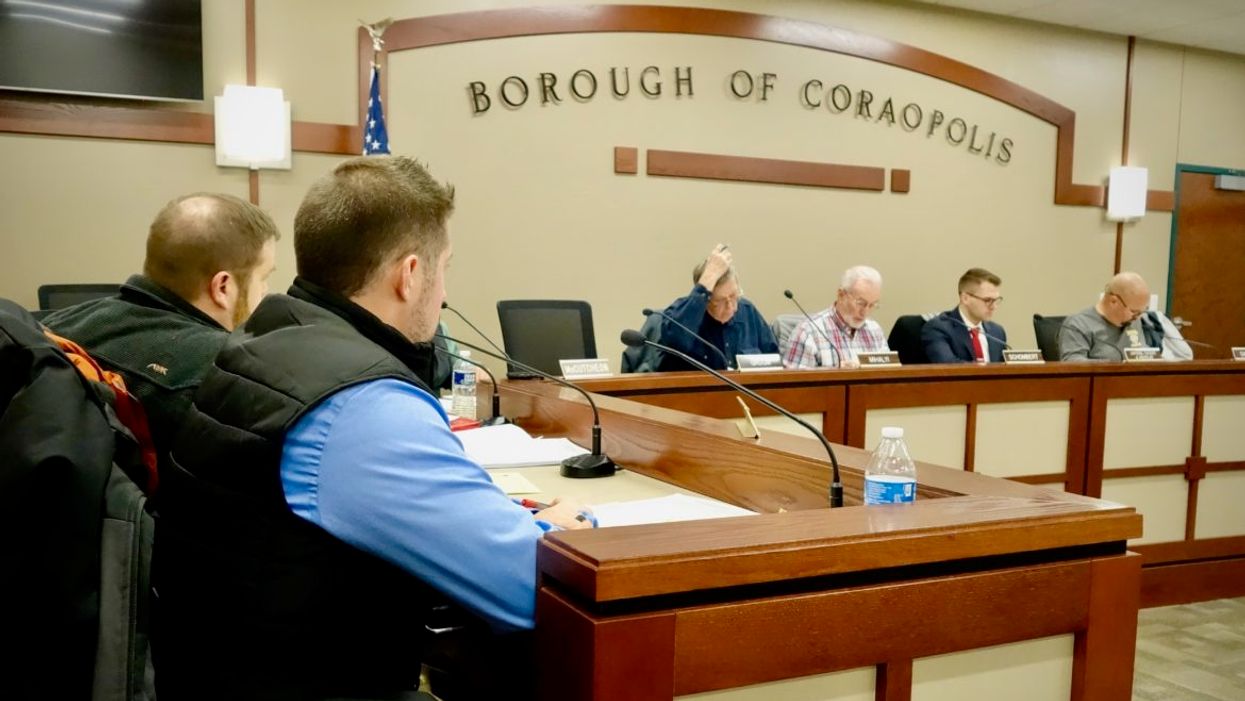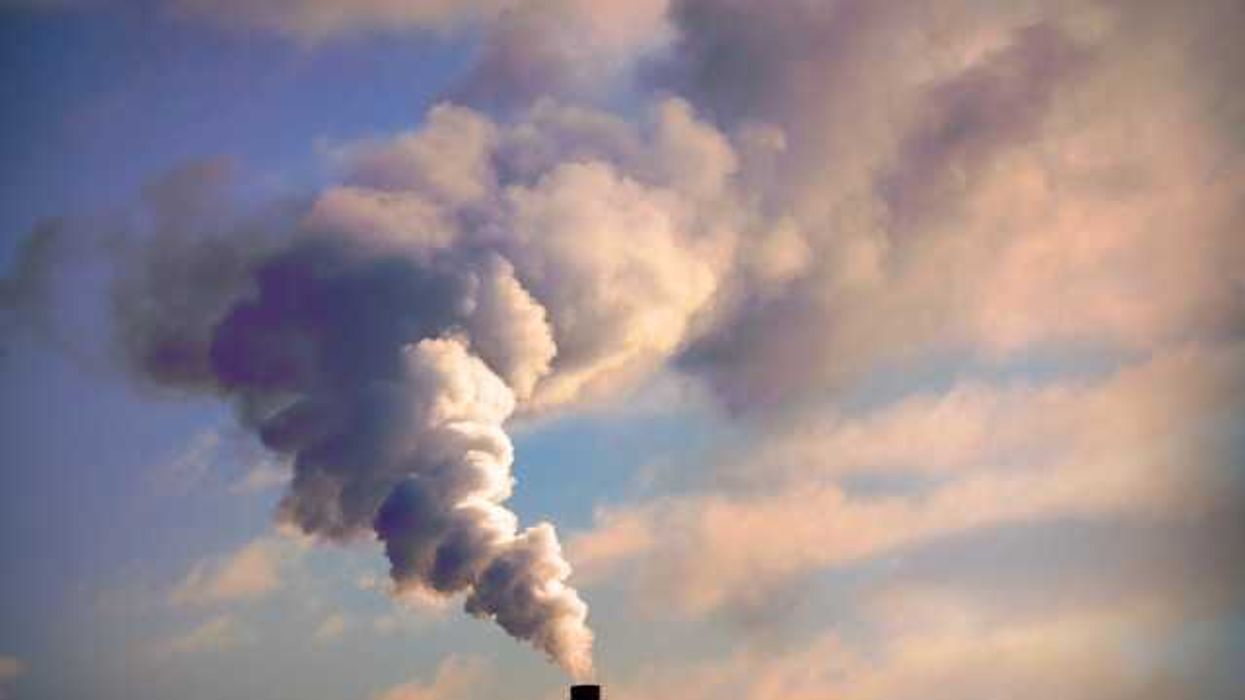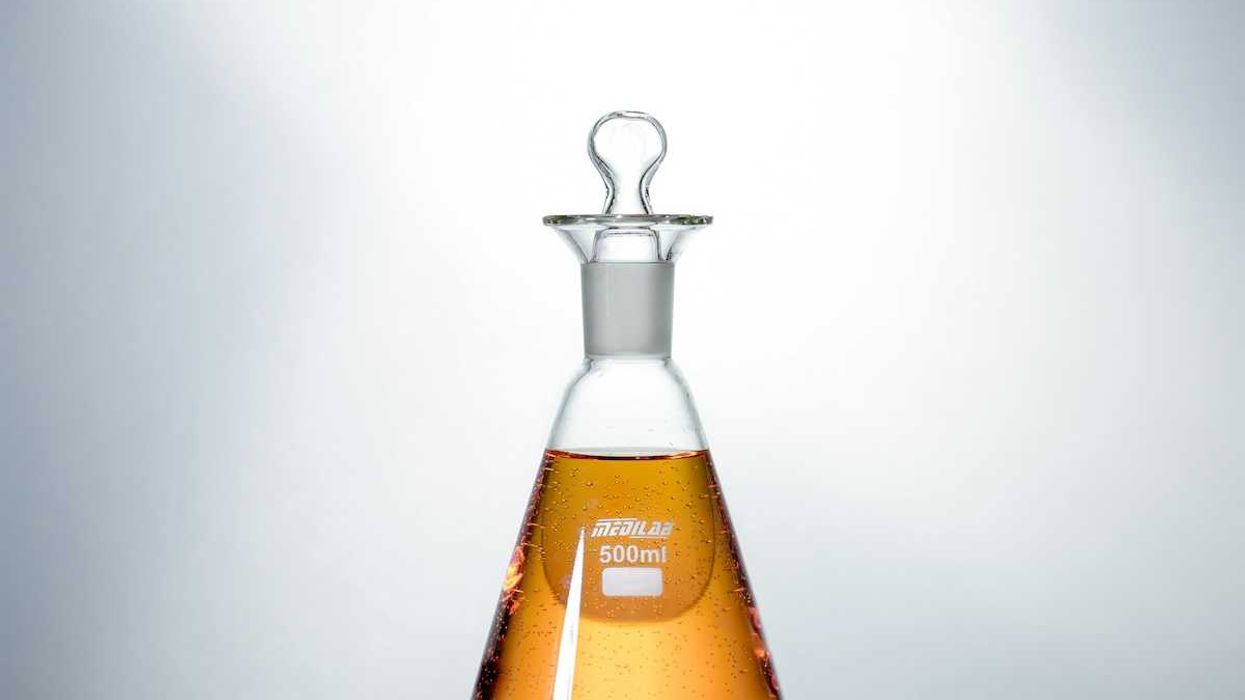Two weeks ago, tests showed that the drinking water from Coraopolis Water and Sewer Authority contained some of the highest levels of PFAS chemicals found in the 96 water sources tested throughout the state.
While the water sample tested below the federal health advisory and Coraopolis water officials say the water is safe to drink, the authority board took action on Wednesday evening.
The board approved an expense of $5,000 to pay for additional testing of its drinking water.
An engineering firm that is designing a $10 million upgrade to the authority's water system also provided the board with a revised proposal in light of the new PFAS results. The revision includes additional granular activated carbon to remove PFAS chemicals. The engineering manager, Lawrence Lennon, said the revisions to the plan would increase the total cost of the project by less than 1 percent.
The water sample taken by the state tested at 12.9 parts per trillion [ppt], below the Environmental Protection Agency's health advisory level of 70 ppt for drinking water. PFAS chemicals are considered toxic in much lower doses than most other contaminants treated in drinking water.
PFAS is a category of chemicals found in firefighting foam and household products such as Teflon pans, waterproof clothing and packaging for food products such as microwave popcorn. It has been linked to a number of health impacts including a depressed immune system, thyroid disease, increased cholesterol and several cancers.
The Coraopolis water authority's treatment plant is currently offline, undergoing maintenance, Lennon said. The authority is buying most of its water from Moon Township.
Further testing of the authority's six drinking water wells could reveal how much PFAS is present in each well, according to John Schombert, the board chair.
"We don't have much data yet," Schombert said, explaining the need for more testing. "We don't want to make a lot of decisions based on one sample."
Schombert said the authority doesn't know where the PFAS chemicals in its drinking water are coming from, and it would be "very expensive" to do the groundwater analysis that could identify the source.
System upgrades
Coraopolis doesn't use carbon filtration but the authority developed a plan in December 2018 to add it as part of a proposed system upgrade. The authority planned to use the filtration to reduce the amount of iron and manganese in the water, according to Lennon of the firm, Lennon, Smith and Souleret Engineering, Inc.
To remove PFAS chemicals, granulated carbon requires additional contact time with the water, Lennon said.
Lennon said few water systems in the region use carbon filtration. It's typically used by water systems that draw from surface water rather than wells. The nearby Moon Township Municipal Authority draws its drinking water from both surface water and wells and has been using carbon filtration for years.
The $10 million upgrade includes the creation of two additional drinking water wells for Coraopolis. Right now, only six of the authority's eight drinking water wells are active. Over time, Schombert said, the capacity of wells decreases and they have to be replaced.
The board is working with Lennon to submit an application to the United States Department of Agriculture to get funding support for the $10 million water system upgrade. Lennon added "additional justification for the carbon" to the application to reflect the plan for PFAS removal.
Schombert said they don't expect to learn if the authority's application is selected for months.
The source
The board did not set a timetable for PFAS testing. Lab results can take more than a month to be returned, according to board members, and sampling is complicated to undertake. Because PFAS is toxic at such low levels and because the chemicals are found in so many consumer products, the procedures for collecting samples are stringent.
A 2017 study revealed that the 171st Air Refueling Wing in Coraopolis tested positive for PFAS contamination. The report stated that the contamination likely spread off the base.
Lennon, however, said he didn't think the Air Force base was the source because it falls outside the "groundwater capture zone" of the borough's drinking water wells. He noted, however, that making a determination is beyond his expertise.
"I don't know what the source of the PFAS would be here," Lennon said. "The Air Force base is pretty far away from this well field."
Richard Deems, the authority's superintendent, said he didn't know of any manufacturing facilities in the borough where the PFAS may be coming from but said there may have been manufacturing facilities in the past that he didn't know about.
How contaminated
The board provided a statement at its meeting, dated Dec. 9, which said a PublicSource story republished by the Beaver County Times overstated the danger to residents. The PublicSource story states in the headline that test results were below the federal health advisory. The board said the Times print edition omitted that information from the headline (the newspaper's website includes the original PublicSource headline).
"The Times' use of the word 'contaminated' mischaracterizes the quality of the drinking water," the board statement reads. The authority received about a half dozen calls from residents asking if the water was safe to drink, according to Ray McCutcheon, the authority manager.
"CWSA Drinking water meets all current federal, state and local drinking water standards for all uses including consumption," the board statement reads.
Coraopolis was one of more than 400 sites in the state identified by the Department of Environmental Protection to test based on its analysis of nearby airports, military bases and manufacturing facilities, where materials containing PFAS may have been used.
About two-thirds of the first 96 sites tested for PFAS didn't show any contamination. One site tested above the federal health advisory.
The board's statement noted that, while Coraopolis' results were among the highest, "less than 25% of the more than 400 susceptible public water systems in PA have been tested to date."
PFOS and PFOA are the two most well studied of thousands of PFAS chemicals and the only ones with a federal health advisory. A state task force is evaluating if it might set a state-specific threshold for PFAS that could be lower than the federal health advisory. The state standards being considered could also include additional PFAS chemicals, including three other PFAS chemicals that Corapolis tested positive for.
Schombert expressed confidence that the authority would be able to meet any new health standards for PFAS because it's already done so for manganese and iron, which can also have negative health effects if consumed at high levels.
"We've had to deal with water quality parameter changes over the years," he said. "Iron and manganese is not regulated as a health standard, it's a secondary standard, but even that one is being ratcheted down. And we've done well, but we need to do more."
Oliver Morrison is PublicSource's environment and health reporter. He can be reached at oliver@publicsource.org or on Twitter @ORMorrison.
















